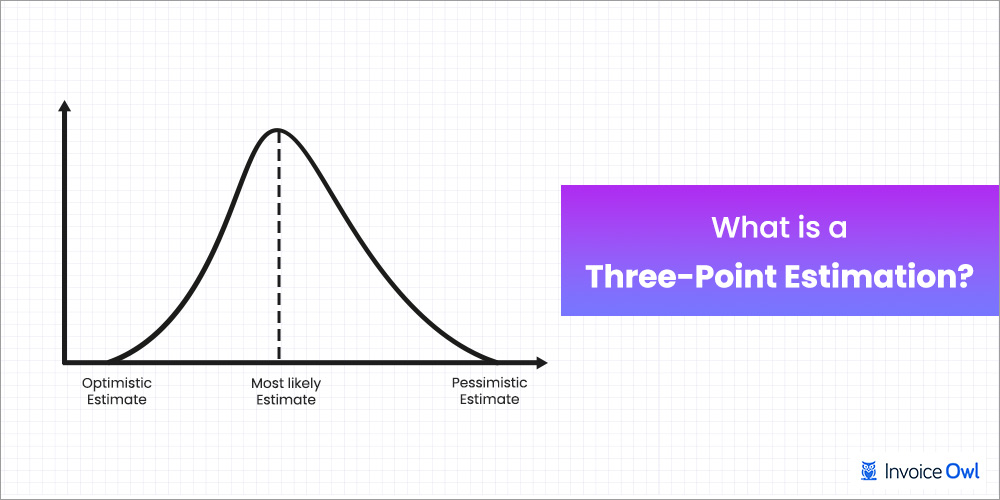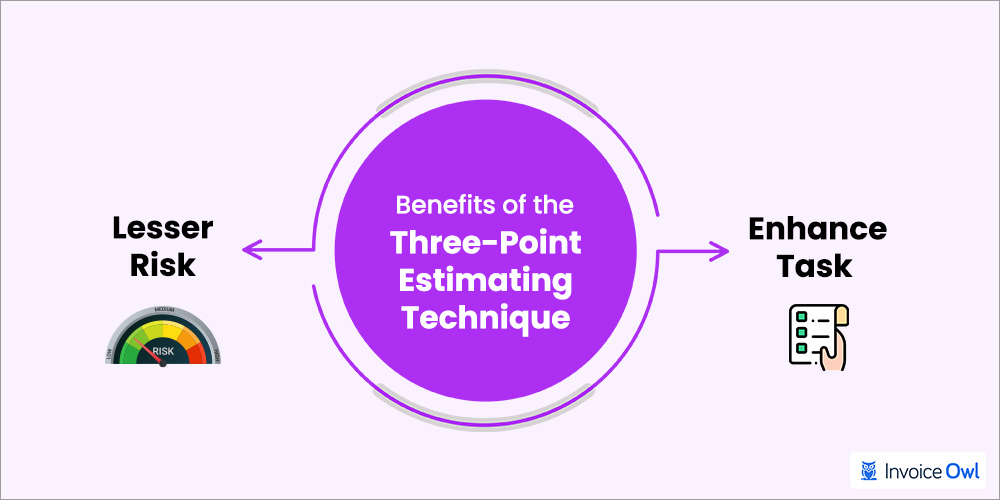📝Key Takeaways:
- Learn how three-point estimating can be a valuable estimating technique in your business.
- Learn how to calculate your three-point estimates using the triangular and PERT distributions.
There are lots of intricacies and perplexities while transacting business as a contractor, and it requires skill and expertise to navigate through them.
However, one of the most difficult elements of running a successful business as a contractor is creating accurate estimates.
Error-free estimates are the backbone of any project you take up as a contractor, and it is crucial you master certain common estimation techniques.
Thus, most profitable businesses adopt a three-point estimation technique. It is super helpful in project management and allows project managers to make more-informed predictions on the outcome of their projects.
Are you curious to know more about it? Then, here’s all you need to know about the three-point estimation techniques alongside their benefits and formulas.
Table of Content
What is a Three-Point Estimate?
Three-point estimating is a project estimation technique used to figure out the probable results or costs of expected events.
Using it, project managers make realistic estimates and arrive at an expected value based on the limited information derived from a thorough project evaluation.
The term “three-point” in three-point estimating stands for the three types of estimates encapsulated in this technique. They are:
- O – O indicates an optimistic estimate, also known as a best-case scenario or best-case estimate. This is the outcome you get when you assume that everything will go well and the chances of facing hurdles are low.
- P – P indicates a pessimistic estimate, also known as a worst-case scenario or worst-case estimate.This is the outcome you get when you assume that nothing will go as planned and the outcome will be more negative than expected.
- M – M indicates the most likely estimate. It falls between the optimistic and pessimistic estimates.It is the value you get when you have determined a middle ground and expect that some aspects of a future event will either go right or wrong.
The three-point estimate is then derived by a formula for the average activity of the estimates. We’ll learn more about this calculation and formula in the sections ahead.
Although the three-point estimation technique helps you find the most realistic estimate, it can be grueling and mentally tiring to calculate all the probabilities of an event. Fortunately, using invoicing and estimation software can ease this for you.
Generate Estimates Faster Yet Accurately
Try InvoiceOwl – your complete estimation and invoicing solution – and create accurate estimates in a matter of minutes.

Example of Three-Point Estimates
Let’s say, you own a construction business and work 12 hours daily. You’re planning to expand because you’re taking more contracts. So, you plan to work 14 hours daily to complete more project tasks. That is your optimistic estimate (O).
But you know that you can’t always work for 14 uninterrupted hours. Things happen. You could get an urgent errand to attend to or have to entertain a surprise guest. So you estimate that on such days, you might be able to do just 10 hours of work.
Now, that is a pessimistic estimate (P), a worst-case scenario, and a negative outcome.
You can also predict that you’ll have a normal day where you have a bit of both. Ideally, you’ll work for 12 hours that day. This is the most likely estimate (M).
It indicates that there are chances of everything going well, like normal, and nothing going wrong.
You can then use any of the three-point estimate formulas to accurately predict what your actual work time will be. But what are the formulas? Let’s look at some of them below.
Three-Point Estimating Formulas
Project managers use three-point estimate formulas to determine the most probable estimate where there are a number of variables. There are many types of three-point formulas, but the most common are:
- Triangular distribution and
- Beta distribution (PERT)
Triangular distribution
The triangular distribution is the easiest way to calculate the average outcome. It’s simply the mean value of the components of your three-point estimate.
And here’s how it’d look when we add our fictional data – the number of your daily work hours as per the previous example:
E = (14 + 10 + 12) / 3
E = 12
Your ideal time range to finish all your tasks, based on the triangular distribution formula, is 12 hours.
Beta distribution (PERT) (PERT)
The Beta distribution or Project Evaluation and Review Technique (PERT) is a much more complex form of three-point estimate calculation. It is derived by applying a weighted average of the Optimistic, Pessimistic, and Most Likely estimates.
In the PERT beta distribution, the three estimates do not carry equal weights. The Most Likely point is multiplied by four times its actual value, and the whole sum of the three points is subsequently divided by six.
And here’s how it’d look when we add our fictional data:
E = (14 + 4(12) + 10)/6
E = 12
We’ve gone through the three-point estimation formulas; let’s look at the benefits and see how three-point estimating helps shape your business and enhance project management.
Benefits of the Three-Point Estimating Technique
The three-point estimating technique offers three important benefits to a project manager, and they are:
-
Lesser risk
By using a three-point estimate on your projects, the chances of risk decrease, as it helps you plan ahead for future events.
Three-point estimation also assists you in providing a nearly accurate estimate of project costs and allows you to analyze and prioritize work.
-
Enhance task scheduling
Task estimates are critical for the success of any project, and the PERT technique can be used to estimate the time it’ll take an individual to complete a given task.
Project estimates also ensure you manage individual tasks more efficiently and increase your productivity.
-
Better planning
It’s okay to wish for the best in business, but consistently expecting the best possible outcome can be dangerous for any business.
There are a billion unforeseen events ready to cripple your project, and you should be prepared for them.
A three-point estimate presents potential outcomes and their cost implications in a less biased manner and provides you with a near-accurate forecast.
This was only a sneak peek into how this method changes your program evaluation game. In short, the whole system is quite helpful for businesses and is definitely worth adopting.
Pitch Your Prices in Minutes
Create professional estimates for your small or large projects with InvoiceOwl in just a few minutes.

-
What are some other estimation techniques?
The 2 techniques we have discussed in this post are the most popular estimation techniques. But some other techniques are:
- Bottom-Up estimates
- Parametric estimates
- Analogous estimates
-
What are the three phases of estimation?
In the first initial phase, the estimation is planned, and data is gathered. The second phase is tracking the projected estimate against the actual result, and the third phase is adding the estimate to the project.
-
Which three-point estimation formula is more accurate?
Project estimators argue that PERT provides a more accurate result than the triangular distribution.
-
Are there any cons to 3-point estimating?
Three-point estimates will not fit all cases, and the end result is often affected by the estimator’s bias. Also, it is more suited for larger projects where no information is available regarding a number of project variables.
Conclusion
Contractors understand that estimates need to be as accurate as possible, so it is essential to choose the appropriate technique.
The three-point estimate improves your prediction and estimation of large projects, making it easier to prioritize tasks.
If you want to create professional estimates a lot faster, InvoiceOwl is your best bet. Specially built for contractors, InvoiceOwl helps you avoid the complexities of drafting a comprehensive estimate using customizable pre-defined templates.
Get started with a FREE trial today.
 By
By 




